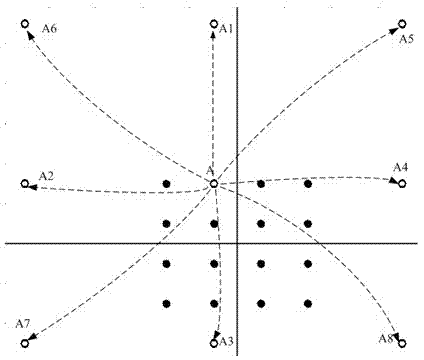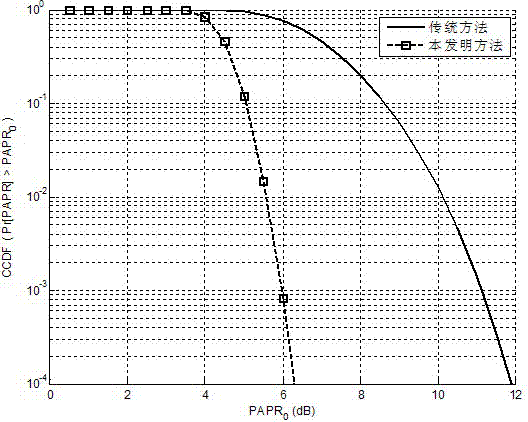Wireless optical orthogonal multi-carrier communication method with low peak to average power ratio
A peak-to-average power ratio and orthogonal multi-carrier technology, applied in multi-carrier systems, multi-frequency code systems, free space transmission, etc., can solve problems such as low frequency utilization, lower overall system performance, and high signal peak-to-average power ratio
- Summary
- Abstract
- Description
- Claims
- Application Information
AI Technical Summary
Problems solved by technology
Method used
Image
Examples
Embodiment Construction
[0044] The present invention will be further described below in conjunction with accompanying drawing and specific embodiment:
[0045] Such as figure 1 As shown, the tone injection algorithm selects one of multiple constellation points to represent the same transmitted symbol, namely Point A in the figure can also be represented by other 8 points, but in order not to excessively increase the average power of the transmitted signal, it should be replaced by points A3 and A4 as much as possible.
[0046] Such as figure 2 , the transmitted data is serial-to-parallel converted after M-QAM modulation to form a frequency domain signal X, using the tone injection algorithm, it is necessary to find a suitable p k and q k The peak power of the transmitted time-domain signal is minimized. The transmitted signal power in the time domain can be written as
[0047] y n 2 = 4 N ...
PUM
 Login to View More
Login to View More Abstract
Description
Claims
Application Information
 Login to View More
Login to View More - R&D
- Intellectual Property
- Life Sciences
- Materials
- Tech Scout
- Unparalleled Data Quality
- Higher Quality Content
- 60% Fewer Hallucinations
Browse by: Latest US Patents, China's latest patents, Technical Efficacy Thesaurus, Application Domain, Technology Topic, Popular Technical Reports.
© 2025 PatSnap. All rights reserved.Legal|Privacy policy|Modern Slavery Act Transparency Statement|Sitemap|About US| Contact US: help@patsnap.com



